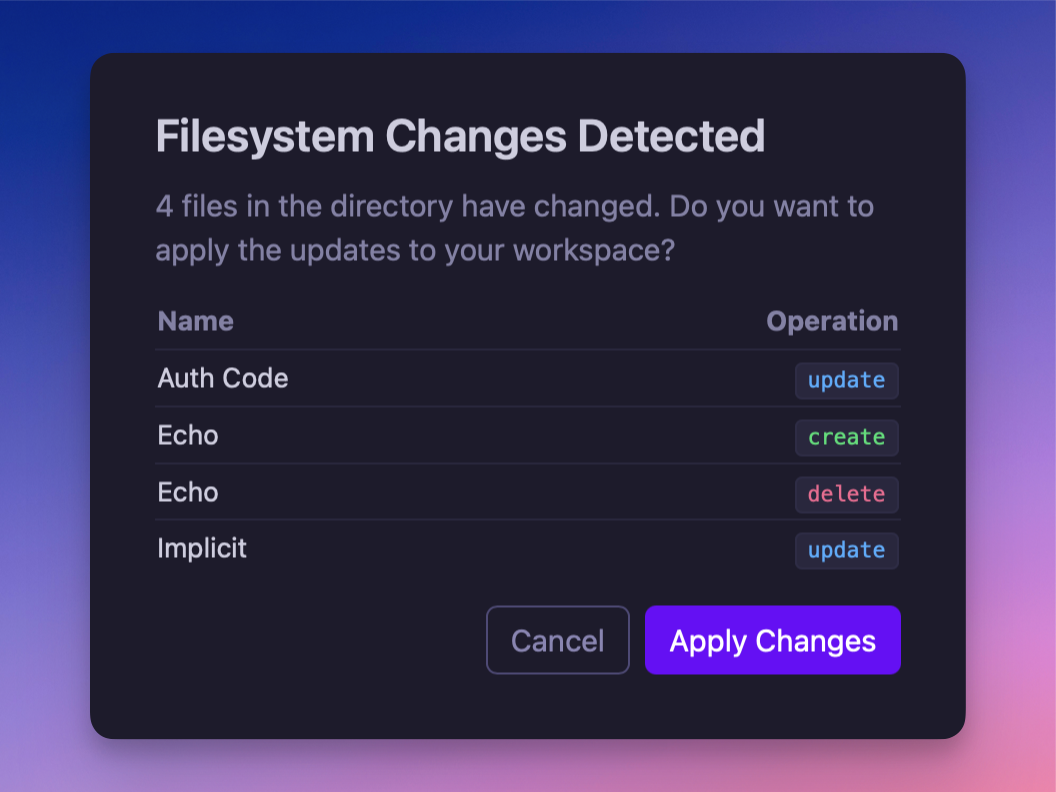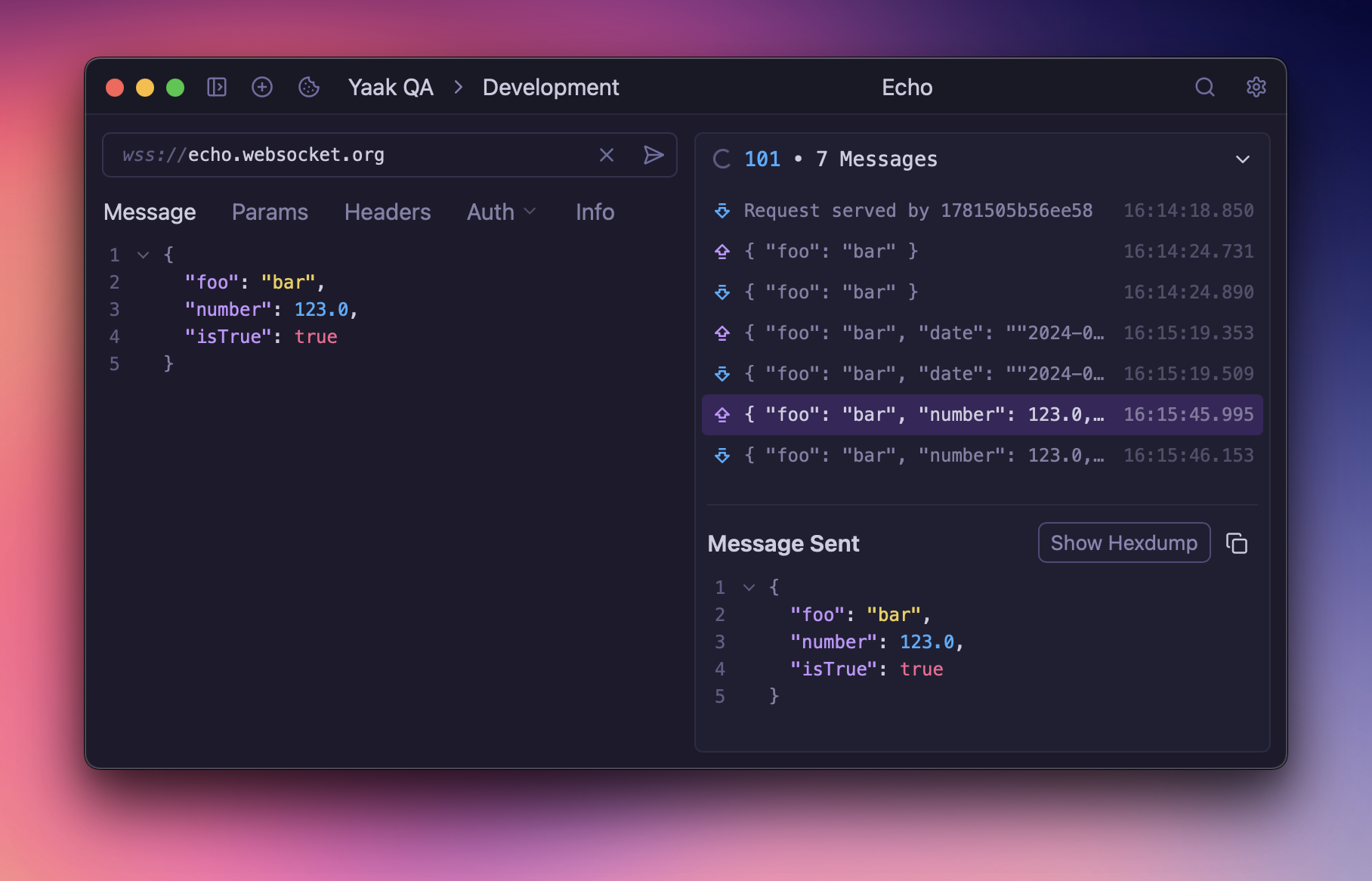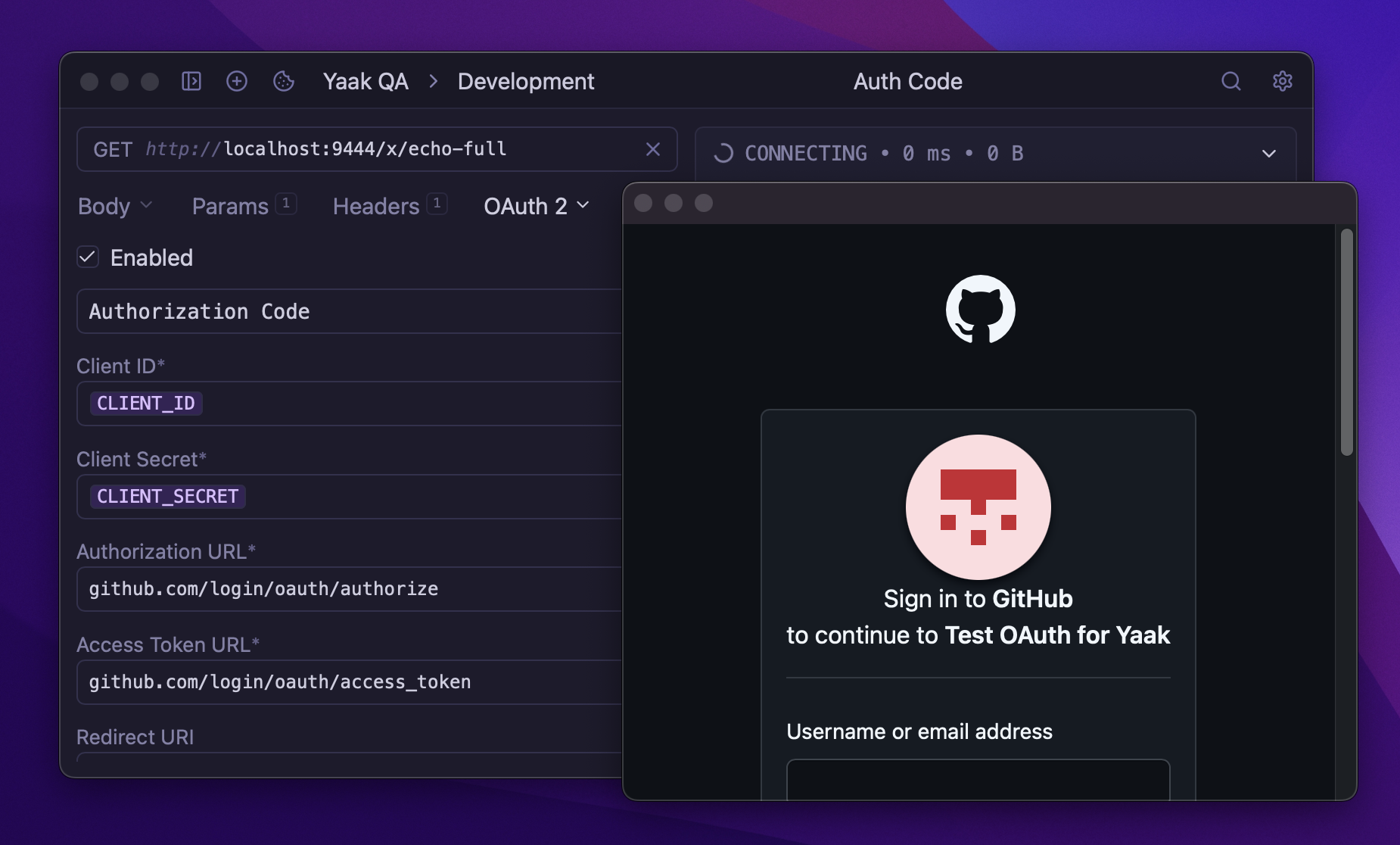At the start of the year, I sent out a short survey which got over 200 responses! My goal was to discover blockers for adoption, and it came down to just a few missing features… So, I implemented them all.
I’m coining this 2025.1 release “Yaak 2.0” because, in my head, there are no longer any major reasons to use anything else.

Yes, it looks the same as befor
Until now, data created within Yaak was trapped in a local SQLite database, which made it difficult to back up and share workspaces.
Now, you can optionally configure a data folder for each workspace:

Modified/deleted filesystem changes will show a confirmation
This makes it trivial to integrate your Yaak workflow with Git, DropBox, or any other tool that works with plain-text files.
Since this is technically a sync system, there’s a bunch of other things I’d like to add in the future like the ability to ignore folders, encrypt data, or even swap out backends (custom S3 bucket?). If you have ideas, please shout them out on the Feedback Forum.
See also: feedback
Directory sync enabled integration with tools like Git, but wouldn’t it be nice if you didn’t have to use the terminal to commit changes? Good news! This release also includes an integrated Git UI to help branch, commit, and push changes.
There are still a few things missing, like https remote support, so look forward to
future improvements.

Confirmation for when changed files will modify or delete dat
One of Yaak’s core goals is to be able to work with any API. Websockets was one of the most voted-on features, and I’m so glad that it’s finally here!

Sending JSON messages to a websocket serve
See also: feedback
Continuing the theme of being able to work with any API, Yaak now supports OAuth 2.0 and JWT.
But here’s the real big news: All auth is now implemented as plugins, meaning you can make your own.

Authenticating OAuth user in a separate windo
Many parts of Yaak’s ReactJS frontend were overhauled to remove any slowdowns caused by working with a large number of requests (in the 100s). Yaak should now stay snappy and responsive, no matter what you’re working on.
I heard you use Vim. So do I, btw.

Setting to change the keymap for all input field
See also: feedback
I just want to close by saying thank you to everyone who filled out the survey, submitted feedback, purchased a license, or participated in any other way. I’m so happy with how far Yaak has come since launching just over a year ago, and I’m so excited for what’s next.
Thanks again,
~ Greg